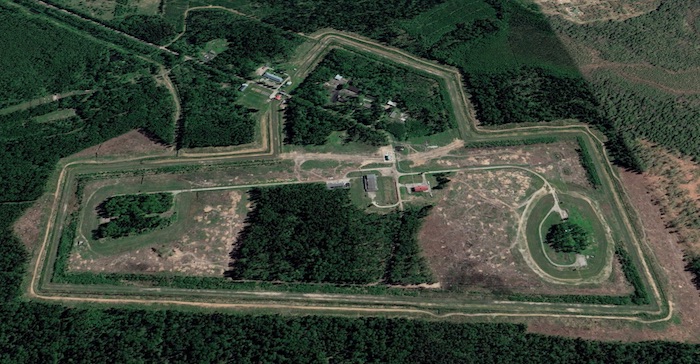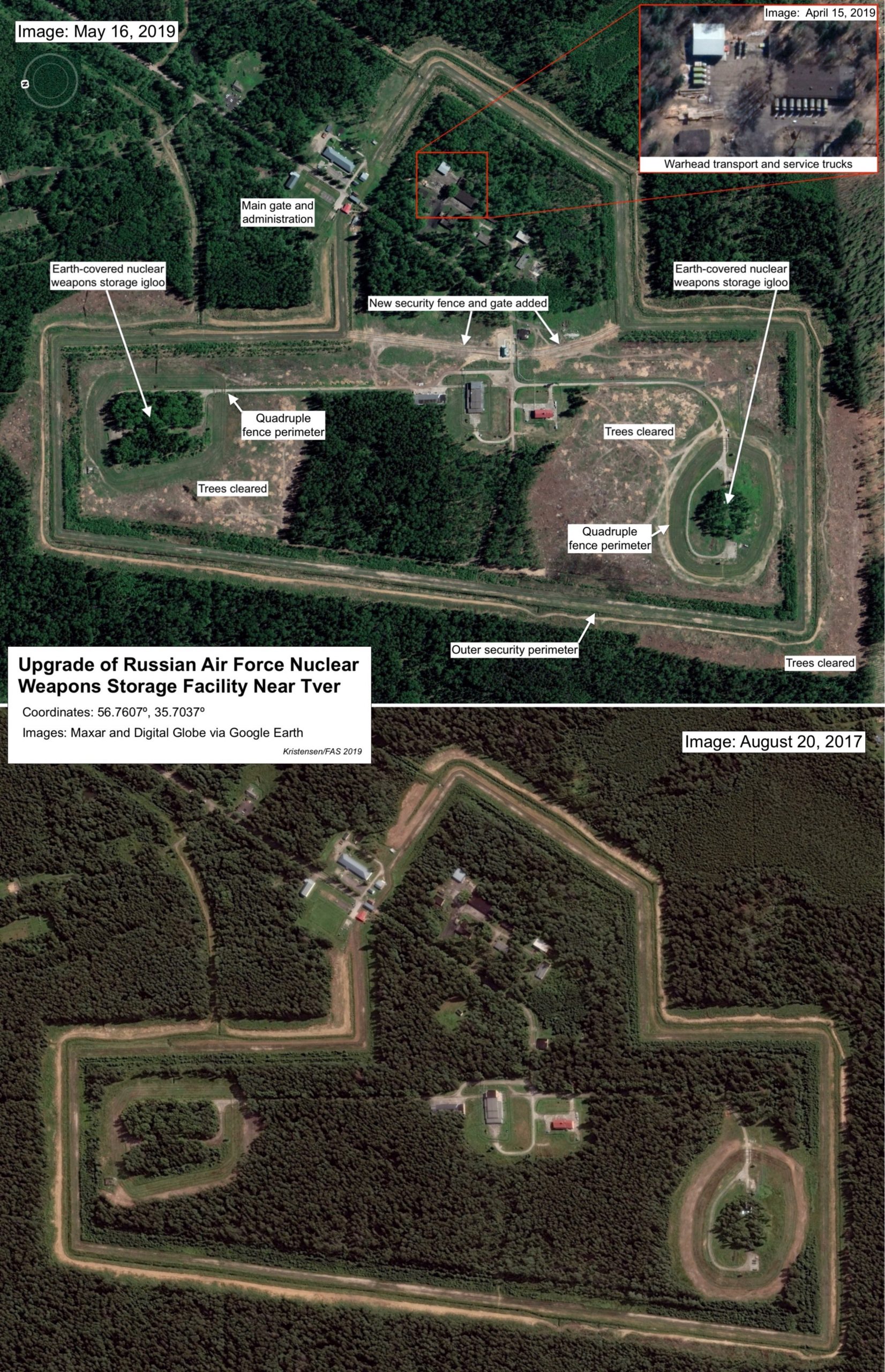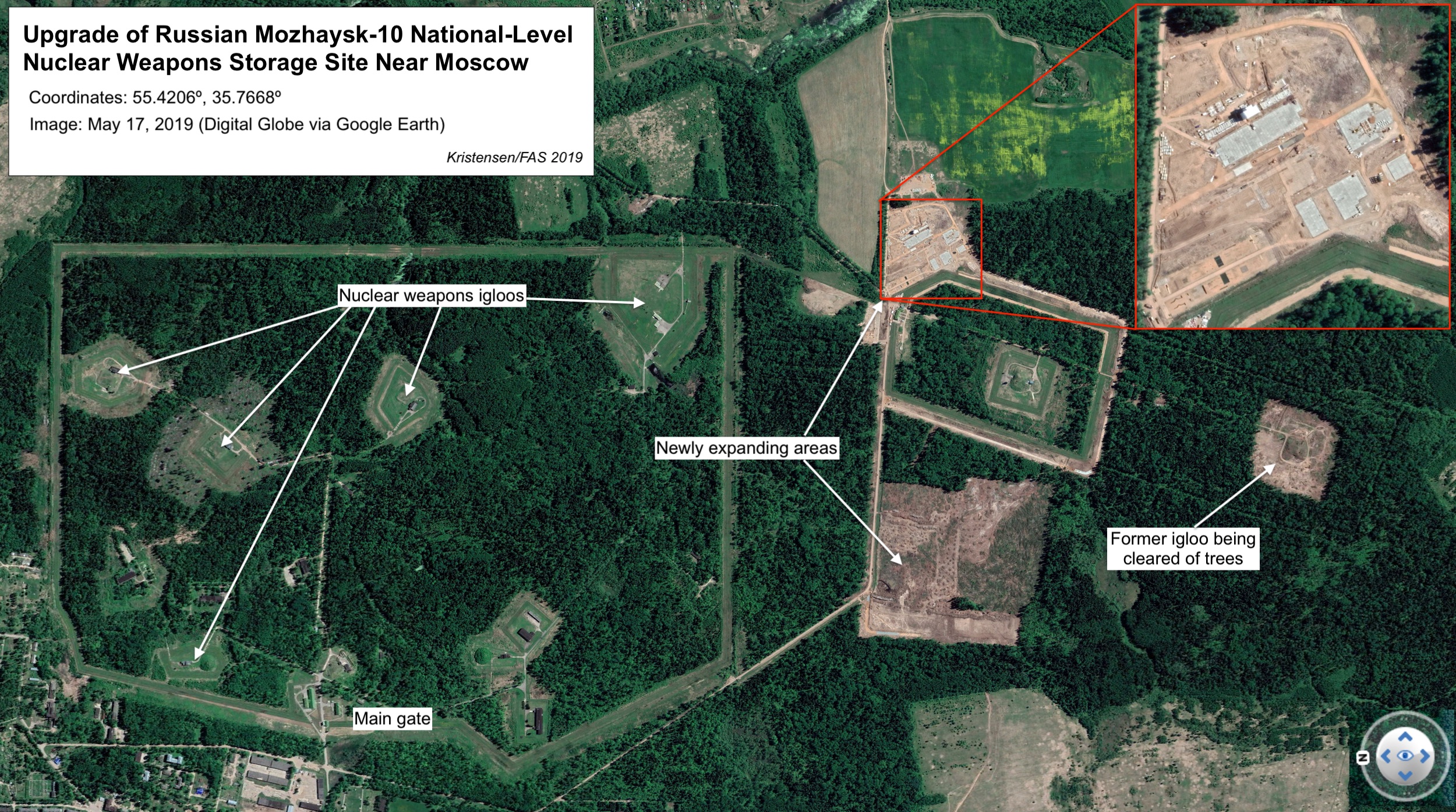
Russia Upgrades Western Nuclear Weapons Storage Sites
Amidst a deepening rift between the United States and Russia about the role of non-strategic nuclear weapons, Russia has begun to upgrade an Air Force nuclear weapons storage site near Tver, some 90 miles (145 kilometers) northeast of Moscow.
Satellite photos show clearing of trees within the site as well as the construction of a new security fence and guard post. The upgrade, which started late-2017 and was completed late last year, was followed by the arrival of what appears to be weapons transport and service trucks earlier this year (see image below).
The Tver site includes two nuclear weapons bunkers as well as service and security buildings. The new security fence and gate added within the site separates the bunker area from the service area. The site is near the Migalovo Air Base, which is not thought to be housing nuclear strike aircraft but might serve a nuclear weapons transport function. If so, it could potentially be responsible for the distribution of nuclear warheads to tactical air bases in north-western Russia in a crisis.
It is impossible to determine from the satellite images if the Tver site stores nuclear weapons at this time, but it is clearly active with considerable personnel and activities indicating weapons might be present. Alternatively, Tver could serve as an Air Force storage site in a crisis. Tver is one of several dozen nuclear weapons storage sites operated by the Russian ministry of defense and military services (see here and here.
There are also important upgrades underway at the Mozhaysk-10 storage site about 70 miles (114 kilometers) west of Moscow, including addition of new support facilities as well clearing of a previously tree-covered weapons storage igloo. Mozhaysk-10 is one of a dozen national-level nuclear weapons storage site and includes six underground igloos and appears to be expanding (see below). Mozhaysk-10 might be used to store both strategic and tactical nuclear weapons.
The upgrades at the Tver and Mozhaysk-10 sites follow an ongoing upgrade to a nuclear weapons storage site in Kaliningrad that began in 2016 and appears intended to support nuclear-capable forces in the isolated enclave.
Russia is estimated to possess approximately 6,500 nuclear warheads, of which an estimated 4,330 are thought to be available for use by the military. We estimate that Russia has about 1,830 nuclear warheads assigned to non-strategic forces; the Pentagon says the number is “up to 2,000” warheads. The US Defense Intelligence Agency (DIA) recently said it expects to see “a significant projected increase in the number of Russia’s non-strategic nuclear weapons” over the next decade, although some past DIA growth projections have turned out to exaggerated.
In response, the United States has begun to increase the upgrade of its non-strategic nuclear weapons beyond the already-planned B61-12 guided gravity bomb for stealthy F-35 fighter-bombers. New weapons with “tactical” missions include the W76-2 low-yield warhead on the Trident II D5LE SLBM and a new nuclear sea-launched cruise missile. And NATO has been upgrading US nuclear weapons storage sites in Europe.
Russia and the United States refuse to disclose how many tactical nuclear weapons they have or where they are stored, and none of these weapons are limited by arms control agreements.
We will further describe these developments, and much more, in our upcoming Nuclear Notebook on tactical nuclear weapons scheduled for publication in the Bulletin of the Atomic Scientists in September 2019.
Additional information:
This publication was made possible by generous contributions from the Carnegie Corporation of New York, the John D. and Catherine T. MacArthur Foundation, the New Land Foundation, the Ploughshares Fund, and the Prospect Hill Foundation. The statements made and views expressed are solely the responsibility of the authors.
While it is reasonable for governments to keep the most sensitive aspects of nuclear policies secret, the rights of their citizens to have access to general knowledge about these issues is equally valid so they may know about the consequences to themselves and their country.
Nearly one year after the Pentagon certified the Sentinel intercontinental ballistic missile program to continue after it incurred critical cost and schedule overruns, the new nuclear missile could once again be in trouble.
“The era of reductions in the number of nuclear weapons in the world, which had lasted since the end of the cold war, is coming to an end”
Without information, without factual information, you can’t act. You can’t relate to the world you live in. And so it’s super important for us to be able to monitor what’s happening around the world, analyze the material, and translate it into something that different audiences can understand.

